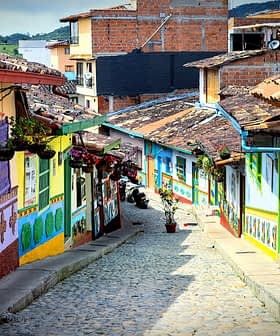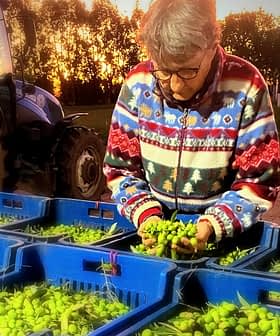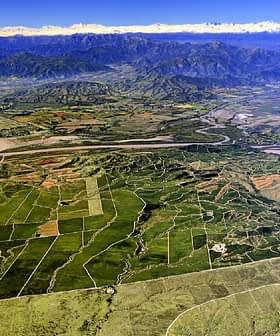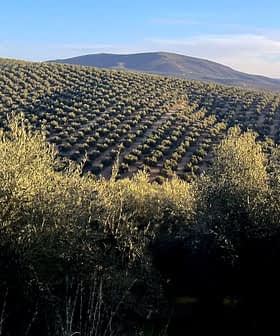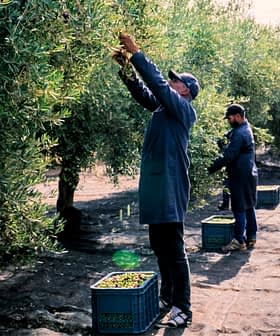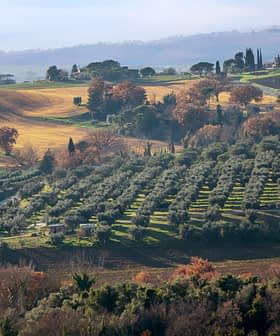The Challenges and Opportunities Facing Morocco’s Olive Oil Sector
While investments are being made to promote quality and climate resilience, some policies are hurting local consumption and inhibiting value-added production.
 Bahia Palace, Marrakesh
Bahia Palace, Marrakesh Efforts to improve olive oil production in Morocco have led to a significant increase in output, but challenges in the domestic market persist. Stakeholders are discussing strategies at an agricultural exhibition to enhance water management, quality standards, and market competition in the olive oil industry to build resilience against climate change. Despite government efforts to control prices through export authorizations, high global olive oil prices and poor harvests have led to increased prices in Morocco, impacting domestic consumption.
Since olive oil production was identified as a strategic sector for economic development in Morocco more than ten years ago, local and international officials have worked to make olive farmers more profitable and resilient to climate change.
While these efforts have helped olive oil production rise steadily from an average of 41,800 tons per annum from the 1990/91 to 1994/95 crop years to an average of 141,600 tons per annum in the past five crop years, the domestic market continues to face significant challenges.
The price of olive oil in Morocco has increased just as it has in other major producing countries… despite the ‘controlled export’ which should insulate and make the internal market less susceptible to external influences.
“To effectively cope with projected climate changes and their impact on water availability, sector stakeholders and decision-makers in Morocco must plan timely adaptation strategies for both the short- and long-term for a warmer and drier future,” said Lisa Paglietti, an economist at the United Nations Food and Agriculture Organization (FAO).
“These strategies will help the country collectively strengthen a high level of competitive advantage for the olive oil sector, capable of enduring over time,” she added.
See Also:A Silver Lining for Some Moroccan Producers After Poor HarvestOfficials from the FAO joined their European Bank for Reconstruction and Development (EBRD) counterparts, local officials and stakeholders at the 16th edition of Morocco’s International Agricultural Exhibition in Meknes to discuss how to reform the sector and build climate resilience.
One key takeaway was the importance of investing in new technologies and techniques to improve water management in the region.
“It is critical to prioritize investments and support stakeholders through innovative technologies and techniques to enhance water management that makes every drop count,” Iride Ceccacci, the EBRD’s head of agribusiness, told the event.
“We are seeing in the countries where the EBRD is investing across the southern and eastern Mediterranean region that olive oil is an example of a sector that can thrive even with the severe water scarcity it faces,” she added, citing Morocco as an example.
According to EBRD officials, Morocco is responsible for nearly five percent of global olive oil production. In 2021, the sector accounted for 13 percent of all agricultural workdays and 19 percent of the country’s food requirements.
Officials at the exhibition also discussed strategies for addressing market competition and meeting quality standards in the olive oil industry. They focused on implementing food safety and environmental certification, labeling and traceability systems to build domestic and international markets.
The event came on the twelfth anniversary of the FAO’s and EBRD’s original identification of olive oil as a strategic sector to promote economic development in Morocco.
Over the past decade, the two international organizations have worked with the Moroccan agricultural ministry and the Moroccan Interprofessional Olive Federation to train mill technicians and agronomists, run olive oil tasting courses and implement sustainable policies.
According to the FAO, the combined action of policies and the private sector has led to a 40 percent increase in the area planted with olive trees in Morocco between 2009 and 2020.
The FAO and EBRD also implemented a support program to establish a dynamic and open market, focusing on adding value across the value chain.
“To achieve this, better regulation, bottling and correct labeling of olive oil were required, particularly for bulk sales,” Nuno Santos, a deputy director at the FAO, told Olive Oil Times. “Additionally, training was provided to address the lack of capacity in managing an olive oil mill and pruning, in partnership with the EBRD.”
The program worked to build value from the bottom up by focusing efforts on extra virgin olive oil production and encouraging producers to sell individually packaged brands instead of selling in bulk to European or North American bottlers.
“Efforts were made to improve import and export management through collaboration with the export promotion agency,” Santos said. “This included initiatives to enhance quality and traceability, transition from bulk to bottled olive oil, enforce food safety measures and engage youth in the sector.”
However, parallel efforts to promote domestic consumption have been hampered by high global olive oil prices and local policies put in place to limit their impacts.
“During the event, we briefly discussed the issue of price spikes with stakeholders,” Paglietti said. “The prices of olive oil in the Moroccan domestic market are very high because the price of olives has increased significantly from 4 to 5 dirhams (€0.37 to €0.47) per kilogram of olives to 12 to 14 dirhams (€1.12 to €1.31) per kilogram.”
“Moreover, the olive oil stocks from previous years were depleted, and the harvests were very poor for the second consecutive year,” she added. “This increase in the price of olives is due to their scarcity.”
Despite implementing export controls in October to lower domestic olive oil prices, Paglietti said prices remain well above average in North Africa’s second-largest producing nation.
“The price of olive oil in Morocco has increased just as it has in other major producing countries, with bulk oil prices reaching €7.50 €8 per kilogram this year, despite the ‘controlled export’ which should, in theory, insulate and make the internal market less susceptible to external influences,” Paglietti said.
“In the E.U., prices have surged due to the collapse of oil production, particularly in Spain. However, local production costs cannot justify this increase in Morocco,” she added. “As a result, domestic consumption has fallen even more drastically. This situation suggests speculation may be at play.”
The government required olive oil suppliers to obtain export authorization to protect domestic prices and encourage bottled exports. All export requests made this year have been approved, but according to local actors, the impact of this policy has been limited.
“There has also been little impact because the sector has experienced two years of severe drought. Bulk sales dominate the Moroccan market,” Paglieti said. “Only ten percent of the olive oil sold in the local market is packaged. This is very, very little.”
“Therefore, even if one or more buyers import olive oil, they will not be able to influence the local market price, which is determined by the bulk oil,” she added. “It’s a very complex equation, but it’s the Moroccan reality.”
“This situation makes government strategies quite fragile and very difficult to implement effectively,” Paglieti concluded. “To complicate the situation even further, the forecast for the next campaign is not encouraging, with very low production. So, prices will remain very high, driving more consumers away.”
Share this article


